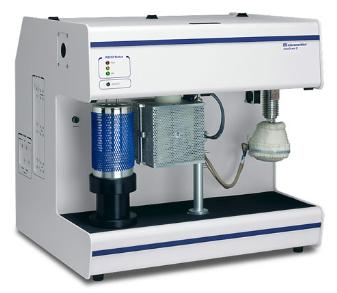
Temperature-Programmed Desorption (TPD) for Catalysts Analytical Service
Our Temperature-Programmed Desorption (TPD) for Catalysts Analytical Service is designed to provide accurate and reliable adsorption-desorption data for catalyst and surface characterization. Our advanced analytical method is highly accurate, providing quantitative measurements and clear insights for comprehensive evaluation of catalytic performance.
Starting from $110 per sample, MSE Analytical Services offer professional Temperature-Programmed Desorption (TPD) Measurement Services for catalysts using Micromeritics AutoChem1 II 2920. $110 per sample using NH3 gas or $145 per sample using other gases. The actual cost should be quoted based on each sample's conditions.
* Note: Data analysis service is not included in the list prices.
Highlights: High Quality Data, Competitive Pricing, Technical Support by Scientists.
Please contact our scientists to discuss your sample Temperature-Programmed Desorption (TPD) Measurement Services requirements. Email: analytical@msesupplies.com
Reference: Temperature Programmed Desorption
Takafumi Ishii, Takashi Kyotani, in Materials Science and Engineering of Carbon, 2016
A temperature programmed desorption (TPD) technique has been developed especially in the field of catalysis, because the technique allows one to study the interaction of reaction gases with solid surfaces, thereby being a powerful tool for both the evaluation of active sites on catalyst surfaces and the understanding of the mechanisms of catalytic reactions including adsorption, surface reaction and desorption. The usefulness of TPD and its experimental details have been well documented by many researchers in the field of catalysis. In a typical TPD run, a small amount of catalyst is placed in a reactor. After an inert gas flows into the catalyst, a reaction (or probe) gas is adsorbed on the catalyst surface. Then the catalyst is heated at a linear heating rate under a carrier gas flow. The change of the reaction gas that is desorbed from the surface upon heating is monitored with a downstream detector as a function of temperature. In the case of carbon materials, TPD has been used mainly for the analysis of oxygen-containing functional groups formed on carbon surfaces, because such functional groups not only function as intermediates in carbon oxidation reactions with O2, H2O and CO2 but also govern the surface chemistry of carbon materials. During a TPD run, these functional groups are thermally decomposed to release CO2, CO and H2O at different temperatures, depending on the thermal stability of the groups. Since the functional groups are not desorbed but decomposed, this technique is not TPD in the strict sense of the word, so that the interpretation of TPD patterns from carbon materials is rather different from the case of catalyst surfaces. In this section, we will introduce key issues to keep in mind when a TPD technique is applied to carbon materials and the resulting TPD patterns are interpreted.
Before shipping samples to us, please contact analytical@msesupplies.com to provide the SDS and confirm the sample requirements. This will help to avoid unnecessary delays in sample processing.
